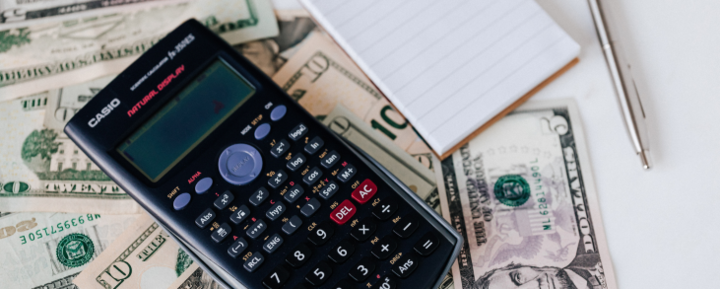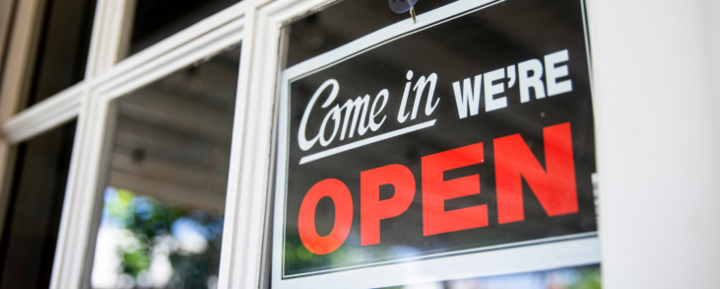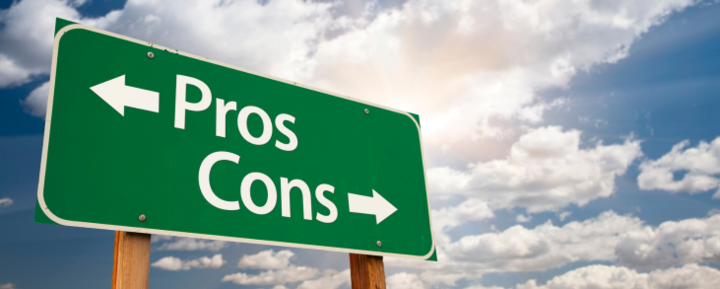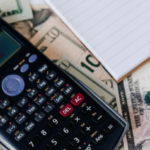As the COVID-19 pandemic swept across the globe, businesses found themselves facing unprecedented challenges. In response, the U.S. Small Business Administration (SBA) rolled out Economic Injury Disaster Loans (EIDLs) aimed at providing critical financial support to help weather the sudden economic downturn. However, as the pandemic’s economic effects lingered, many businesses struggled to rebound
Perhaps you’re considering bankruptcy as a means to resolve your EIDL debt. Read on to learn more about the legal and financial implications of seeking a bankruptcy discharge for EIDLs and alternatives to bankruptcy you may want to consider.
Details Behind EIDL Loans
An EIDL (Economic Injury Disaster Loan) is a program offered by the U.S. Small Business Administration (SBA). It provides financial assistance to small businesses, agricultural cooperatives, and private nonprofits suffering substantial economic injury from a declared disaster.
EIDL loans help businesses meet financial obligations and operating expenses they would have covered if the disaster hadn’t occurred. This includes working capital and payroll. It also covers accounts payable and other bills that can’t be paid due to the disaster’s impact.
EIDLs aimed to provide economic relief to businesses that lost revenue due to the COVID-19 pandemic. This support helped cover operational expenses like payroll, rent, and fixed debts. Businesses also used it for bills they couldn’t pay due to the pandemic’s impact. Loans were made up to $2 million. The actual loan amount depended on the business’s economic injury and financial needs.
EIDL Loans and Bankruptcy: What They Mean for Businesses
Dischargeability of SBA Loans
There are specific conditions and exceptions where parts or all of the loan might be discharged, depending on the type of bankruptcy:
- Chapter 7 Bankruptcy: In Chapter 7 bankruptcy, the business can discharge SBA loans, but this usually requires liquidating its assets. The business uses the proceeds from liquidation to pay creditors, including the SBA loan. Any remaining balance after liquidation might be discharged. However, personal guarantees can complicate this process (more on that below).
- Chapter 11 Bankruptcy: In Chapter 11 bankruptcy, a business undergoes reorganization rather than liquidation. The business may still be responsible for paying back the SBA loan, but the terms could be renegotiated. Discharge of the loan is less common under Chapter 11.
- Chapter 13 Bankruptcy: For sole proprietorships, individuals can file for Chapter 13 bankruptcy, which involves creating a repayment plan. SBA loans can be included in this repayment plan, but discharge is subject to the completion of the plan, which usually spans three to five years.
Many SBA loans require personal guarantees from the business owners. If the business files for bankruptcy, the individual who provided the personal guarantee might still be held liable for the debt, making it difficult to discharge the loan completely. Here’s a look at how different requirements for personal guarantees work based on the EIDL loan amount:
- For EIDL loans of $25,000 or less, no personal guarantee is required.
- For loans over $25,000 and up to $200,000, the SBA generally requires a personal guarantee, but this was waived for some loans during specific periods, such as during the COVID-19 pandemic.
- For loans greater than $200,000, a personal guarantee is typically required.
Declaring Bankruptcy With an EIDL Loan
In general, lenders handle EIDL loans based on their security and priority, similar to standard loans. For most borrowers, lenders likely consider an EIDL loan as unsecured debt, which may qualify for discharge.
How Does an EIDL Loan Impact Bankruptcy?
If the EIDL is unsecured (common for loans under $25,000), it’s more likely to be treated as a general unsecured debt in bankruptcy, which could potentially be discharged. If secured by collateral, the treatment depends on the value of the collateral relative to the debt and other liens against the collateral.
Legal Implications of Filing Bankruptcy on EIDL Loans
Legal Risks and Implications
Filing for bankruptcy shortly after receiving an EIDL could raise concerns about fraud. This is when a debtor incurs debt without the intention of repayment. The court might scrutinize the timing of the loan application and the bankruptcy filing to ensure there was no intent to defraud.
In other words, businesses need to be sure they comply with all legal requirements of the EIDL program when declaring bankruptcy. Failure to do so could result in penalties, denial of discharge, or even criminal charges if fraud is involved.
Given these implications, it’s highly advisable that you consult with a debt help attorney or bankruptcy attorney who can provide tailored advice and guidance based on your specific circumstances. This ensures you navigate the complexities of bankruptcy law effectively while addressing the unique aspects of EIDLs.
Current Laws and Regulations Governing EIDL Loans and Bankruptcy
During the COVID-19 pandemic, temporary changes to bankruptcy laws under the CARES Act were made. These included increasing the debt limit for small business debtors seeking relief under Subchapter V of Chapter 11 and modifying some requirements for Chapters 7 and 13 filers. While many of these provisions have expired, they have influenced ongoing legislative discussions and could impact future regulations.
Pros and Cons of EIDL Bankruptcy Discharge
Filing for bankruptcy when you have an EIDL, with the goal of seeking discharge, can come with various pros and cons. Here’s a breakdown of key considerations:
Pros
- Debt Relief: Discharging an EIDL through bankruptcy can provide significant financial relief to debtors who are unable to repay the loan due to economic hardship.
- Prevent Business Closure: For small businesses, discharging debts including EIDLs can be the difference between staying in business and closing down. This allows businesses to reset financially while continuing their operations.
- Fresh Start: Bankruptcy is designed to give debtors a new beginning. Discharging debts like EIDLs helps to clear the slate of past financial burdens and start over with a more manageable financial situation.
- Legal Protection: Filing for bankruptcy invokes the automatic stay, which stops all collections actions, lawsuits, and foreclosures. This gives debtors breathing room to reorganize or plan their finances without immediate external pressures.
Cons
- Impact on Credit: Filing for bankruptcy can significantly impact your credit score for several years (up to 10 years for Chapter 7). This can affect your ability to obtain future financing.
- Long-Term Consequences: The long-lasting mark on your credit report can lead to higher interest rates and less favorable terms on future loans.
- Public Record: Bankruptcy filings are public records, which might affect the reputation of a business among suppliers and customers.
- Eligibility for Future Assistance: After a bankruptcy discharge, obtaining future government loans or assistance can be more challenging. Agencies like the SBA might view a past bankruptcy as a risk factor in future loan considerations.
- Legal and Financial Limitations: Bankruptcy cannot discharge all forms of debt. Plus, the process of bankruptcy itself can be costly and time-consuming, involving legal fees and court proceedings.
- Restrictions on Operations: For businesses, certain types of bankruptcies (like Chapter 11) may require operational adjustments or reductions in workforce, which can disrupt business operations.
Bankruptcy Process
The business bankruptcy process can vary depending on the type of bankruptcy filed. The most common types for businesses are Chapter 7, Chapter 11, and in some cases, Chapter 13. Here’s a general overview of each type and the process involved:
(Liquidation) Chapter 7 Bankruptcy
- Filing the Petition: The business files a petition with the bankruptcy court that serves its area of residence or organization. The petition includes detailed schedules of the business’s assets, debts, income, and expenses.
- Automatic Stay: When the business files the petition, an automatic stay immediately goes into effect, stopping all collection actions by creditors against the business.
- Appointment of a Trustee: The court appoints a bankruptcy trustee to oversee the case. The trustee liquidates any non-exempt assets of the business and distributes the proceeds to creditors.
- Meeting of Creditors: The trustee holds a meeting where creditors can question the debtor under oath about the business’s assets and liabilities.
- Liquidation: The trustee sells the company’s assets and uses the funds to pay creditors, with secured creditors receiving payment first.
- Discharge: After the trustee liquidates the assets and pays the creditors, the court discharges any remaining debt, and the business dissolves.
(Reorganization) Chapter 11 Bankruptcy
- Filing the Petition: Similar to other forms of bankruptcy the business must file a petition along with required schedules and statements. Businesses can continue to operate as “debtors in possession,” managing their own operations.
- Automatic Stay: The automatic stay also applies in Chapter 11, preventing creditors from taking collection actions against the business.
- Reorganization Plan: The debtor proposes a reorganization plan that outlines how it will pay creditors over time, which may include downsizing operations, renegotiating debts, or liquidating some assets to pay off obligations.
- Creditor Committees: Often, a committee of creditors is formed to negotiate the plan with the debtor and provide input to the court.
- Plan Approval: The reorganization plan must be approved by a majority of creditors and confirmed by the court. It legally binds the debtor and creditors.
- Execution of the Plan: Once approved, the business continues to operate and make payments according to the plan.
- Discharge: Upon completion of all plan payments, the business receives a discharge of any remaining debts.
(Small Business Reorganization) Chapter 13 Bankruptcy
- Filing and Plan: The process is similar to Chapter 11 but on a smaller scale. The business owner files a repayment plan with the petition, proposing to pay off all or part of the debts over three to five years.
- Trustee’s Role: A trustee is appointed to collect payments from the business owner and distribute them to creditors.
- Completion: After the repayment plan is successfully completed, the remaining eligible debts are discharged.
Alternatives to EIDL Bankruptcy Discharge
For businesses struggling to manage their EIDL payments, considering bankruptcy is a serious step with long-lasting implications. However, there are several alternatives to bankruptcy that businesses can explore to manage their financial obligations better. Here are some practical options:
- Negotiate with the Lender: Contact the SBA to discuss possible hardship options or adjustments to the loan terms. This could include extending the loan period, reducing the interest rate, or temporarily deferring payments.
- Sell Non-Essential Assets: Selling off unused or non-essential assets can generate cash to pay down the EIDL without resorting to bankruptcy.
- Reduce Operating Expenses: Analyze current expenses and reduce unnecessary spending. Streamlining operations and improving efficiency can free up funds to pay off debts.
- Explore government relief programs: Some government programs offer grants, especially in disaster-impacted areas, which do not require repayment. Local economic development programs might also offer assistance in the form of grants or subsidies.
- Debt Prioritization: If the business has multiple creditors, negotiating terms with less critical creditors could free up resources to manage more crucial debts like an EIDL.
- Professional Guidance: Consulting with a financial advisor or debt help attorney can provide professional insights into managing debt. These services can help devise a comprehensive plan to address your business’s financial issues without resorting to bankruptcy.
How Tayne Law Group Can Help
Navigating the world of EIDL debt resolution can be challenging. But having the right team on your side may make the difference in keeping your business operating. We at Tayne Law Group offer a no-obligation, free consultation to get to know your business and its challenges. Experienced attorneys at our law firm will discuss potential strategies that make sense to help you resolve your EIDL debt. Call us today for a free no obligation phone consultation toll-free at (866) 890-7337 or fill out our short contact form. We never share or sell your information and all conversations are confidential.








